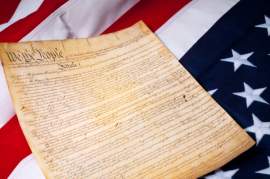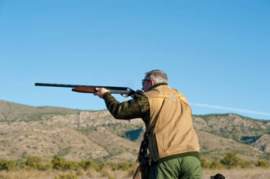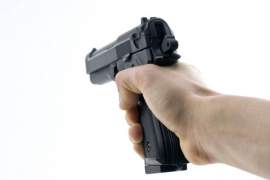
All You Need To Know About Gun Safety Holsters

A gun holster is basically a device that allows a person to carry, hold, or restrict movement of a handgun. Gun holsters are commonly used where the wearer may need quick access to the firearm, or for the purpose of concealed carry, as permitted by law.
A gun holster is design with a few important factors in mind. Firstly, a gun holster must protect the firearm adequately. Secondly, it must allow the firearm to fit securely within, with out constricting the ability to draw the weapon or return it to the holster.
Lastly, by its design, a holster is supposed to allow for easy access so an individual can withdraw the weapon with one and hand, and also return it safely with one hand. An important facet to consider is that holster are also designed with the wearer in mind; a holster that may function properly for one individual may not do so for another.
The type of holster worn is typically bound to personal choice, for the only possible exception being when it is issued for law enforcement or military personnel. Therefore, there is quite the number of gun holsters available for firearm users. Not only do they differ in type and function, but also in the type of materials used and what kind of firearm they are to house within.
By the common populace, a holster simply holds a gun, but is known that where the gun is located on the person may often differ. This is due to holster being design with practicality and functionality in mind. Gun holsters are typically located around a person's waistband, or belt. That is the most common associated location for a firearm holster.
The most commonly used holster, as per law enforcement and military, is the outside the waistband holster or belt holster. In the industry, this type of holster is commonly referred to as an OWB holster. An inside the waistband, or IWB, holster is also made. This weapon is designed to be attached inside the wearer's pants, which offers more concealment.
Shoulder holster are also another common type frequently used. It is worn in similar fashion as a backpack, and the holster itself is attached to either the right or left side of the person. Some offer the option of dual holsters, one firearm at each side. Pocket holster are made for gun itself to be carried inside a pocket, and is generally reserved for smaller weapons to act as backup for a main weapon.
Another common holster used for backup firearms is the ankle holster because it easily conceals the weapon Thigh holsters are slowly becoming the new accepted standard. They are secured at the thigh, at or near where the arm naturally hangs for the user. This type of holster offers quick access and withdrawal capabilities. It is often employed by law enforcement or military personnel that may require the use of tactical wear that may impede the use of waistband holster.
Other holsters, such as the groin and lower back holsters, are still used today but quite rarely. Though both offer good concealment capabilities, they have been recently found to possible cause injury in close quarter combat situations if the wearer falls or takes some sort of impact at the location of the holster. Many law enforcement agencies do not allow back holsters to be worn by their officers because of the risk of spinal injury.
The types of holsters available make it quite easy for the wearer to personalize his options depending on need and comfort. However, it is important to note that since many of these holsters are made with the ability to conceal in mind, it is important to check the local and state regulations concerning the carrying of concealed weapons and abide by those laws and regulations.
Gun holsters themselves can be categorized by their use. Gun holsters are usually categorized as follows:
Duty Holsters: Typically worn by law enforcement personnel
Tactical Holsters: Typically worn by military personnel
Concealment Holsters: Typically worn by plain-clothes officials and private users
Sporting Holsters: Typically worn for shooting sports and hunting situations
Depending on the type of holster, the materials used to make the holster will be chosen depending on how materials themselves will allow for better functionality of the gun holster.
Duty holsters are typically made of leather, plastic, or nylon, and are designed to be open carry. These holsters will typically be waistband holsters and used for service handguns. A key feature of duty holsters is that they often also vary on the security or retention of the weapon itself. This is designed so as an officer can not be disarmed by suspect.
Tactical holsters, also referred to as Military holsters, are typically made out of plastic or nylon for purpose of being lighter in weight. It is not uncommon for the tactical holster to be designed in camouflage. Typically, these holsters have minimum retention when compared to Duty holsters, though some may offer the option of a flap to cover the weapon entirely for protection purposes.
Concealment holsters, as their name implies, are designed to be hidden from plain view. They are designed to be lightweight and comfortably worn, and vary depending on where the holster is to be carried on the person. Concealment holsters often use more surface area than the actual weapon may need so as to prevent any outlines of the gun to be perceived, thus making it discernible.
Materials used can range from leather, nylon, plastic, and synthetic materials. Sporting holsters are the most function-oriented designed holsters for they serve a specific purpose depending on the sporting event that employs them. These are the most specialized holsters available, and often serve the purpose of providing advantages within the realms of legality as per the specific event. Hunting holsters are often unique because they often must consider extra components of a firearm, such as telescopic sights or collapsible shoulder stocks.
Because gun holsters are designed based on purpose, functionality, personalization, and comfort, it is important in considering which type of holster suits the needs of an individual. Safety, concealment, durability, draw ease, retention, adjust-ability, and cost are all factors that should be considered before purchasing any kind of gun holster. Gun holsters are designed with the user in mind, and therefore, the user must contemplate how the firearm will be used and what kinds of situations or environments the employment of the firearm can or may occur.
NEXT: All You Need to Know About Gun Safety Protection





















